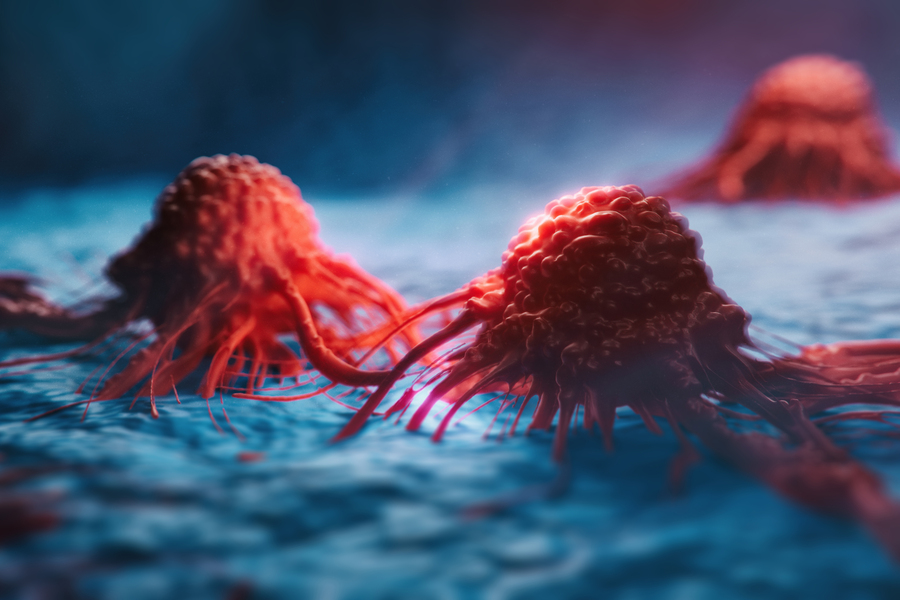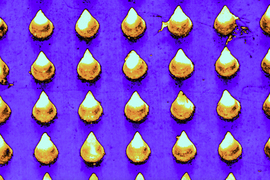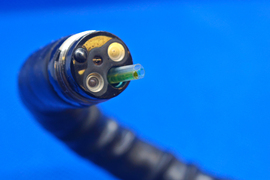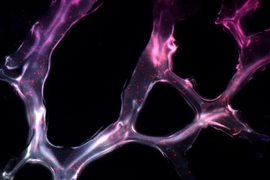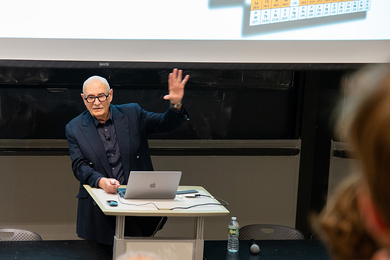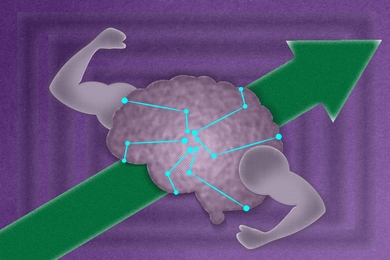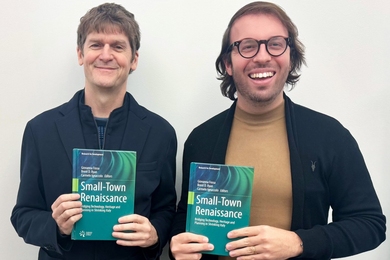Audio
By stimulating cancer cells to produce a molecule that activates a signaling pathway in nearby immune cells, MIT researchers have found a way to force tumors to trigger their own destruction.
Activating this signaling pathway, known as the cGAS-STING pathway, worked even better when combined with existing immunotherapy drugs known as checkpoint blockade inhibitors, in a study of mice. That dual treatment was successfully able to control tumor growth.
The researchers turned on the cGAS-STING pathway in immune cells using messenger RNA delivered to cancer cells. This approach may avoid the side effects of delivering large doses of a STING activator, and takes advantage of a natural process in the body. This could make it easier to develop a treatment for use in patients, the researchers say.
“Our approach harnesses the tumor’s own machinery to produce immune-stimulating molecules, creating a powerful antitumor response,” says Natalie Artzi, a principal research scientist at MIT’s Institute for Medical Engineering and Science, an associate professor of medicine at Harvard Medical School, a core faculty member at the Wyss Institute for Biologically Inspired Engineering at Harvard, and the senior author of the study.
“By increasing cGAS levels inside cancer cells, we can enhance delivery efficiency — compared to targeting the more scarce immune cells in the tumor microenvironment — and stimulate the natural production of cGAMP, which then activates immune cells locally,” she says. “This strategy not only strengthens antitumor immunity but also reduces the toxicity associated with direct STING agonist delivery, bringing us closer to safer and more effective cancer immunotherapies.”
Alexander Cryer, a visiting scholar at IMES, is the lead author of the paper, which appears this week in the Proceedings of the National Academy of Sciences.
Immune activation
STING (short for stimulator of interferon genes) is a protein that helps to trigger immune responses. When STING is activated, it turns on a pathway that initiates production of type one interferons, which are cytokines that stimulate immune cells.
Many research groups, including Artzi’s, have explored the possibility of artificially stimulating this pathway with molecules called STING agonists, which could help immune cells to recognize and attack tumor cells. This approach has worked well in animal models, but it has had limited success in clinical trials, in part because the required doses can cause harmful side effects.
While working on a project exploring new ways to deliver STING agonists, Cryer became intrigued when he learned from previous work that cancer cells can produce a STING activator known as cGAMP. The cells then secrete cGAMP, which can activate nearby immune cells.
“Part of my philosophy of science is that I really enjoy using endogenous processes that the body already has, and trying to utilize them in a slightly different context. Evolution has done all the hard work. We just need to figure out how push it in a different direction,” Cryer says. “Once I saw that cancer cells produce this molecule, I thought: Maybe there’s a way to take this process and supercharge it.”
Within cells, the production of cGAMP is catalyzed by an enzyme called cGAS. To get tumor cells to activate STING in immune cells, the researchers devised a way to deliver messenger RNA that encodes cGAS. When this enzyme detects double-stranded DNA in the cell body, which can be a sign of either infection or cancer-induced damage, it begins producing cGAMP.
“It just so happens that cancer cells, because they’re dividing so fast and not particularly accurately, tend to have more double-stranded DNA fragments than healthy cells,” Cryer says.
The tumor cells then release cGAMP into tumor microenvironment, where it can be taken up by neighboring immune cells and activate their STING pathway.
Targeting tumors
Using a mouse model of melanoma, the researchers evaluated their new strategy’s potential to kill cancer cells. They injected mRNA encoding cGAS, encapsulated in lipid nanoparticles, into tumors. One group of mice received this treatment alone, while another received a checkpoint blockade inhibitor, and a third received both treatments.
Given on their own, cGAS and the checkpoint inhibitor each significantly slowed tumor growth. However, the best results were seen in the mice that received both treatments. In that group, tumors were completely eradicated in 30 percent of the mice, while none of the tumors were fully eliminated in the groups that received just one treatment.
An analysis of the immune response showed that the mRNA treatment stimulated production of interferon as well as many other immune signaling molecules. A variety of immune cells, including macrophages and dendritic cells, were activated. These cells help to stimulate T cells, which can then destroy cancer cells.
The researchers were able to elicit these responses with just a small dose of cancer-cell-produced cGAMP, which could help to overcome one of the potential obstacles to using cGAMP on its own as therapy: Large doses are required to stimulate an immune response, and these doses can lead to widespread inflammation, tissue damage, and autoimmune reactions. When injected on its own, cGAMP tends to spread through the body and is rapidly cleared from the tumor, while in this study, the mRNA nanoparticles and cGAMP remained at the tumor site.
“The side effects of this class of molecule can be pretty severe, and one of the potential advantages of our approach is that you’re able to potentially subvert some toxicity that you might see if you’re giving the free molecules,” Cryer says.
The researchers now hope to work on adapting the delivery system so that it could be given as a systemic injection, rather than injecting it into the tumor. They also plan to test the mRNA therapy in combination with chemotherapy drugs or radiotherapy that damage DNA, which could make the therapy even more effective because there could be even more double-stranded DNA available to help activate the synthesis of cGAMP.
